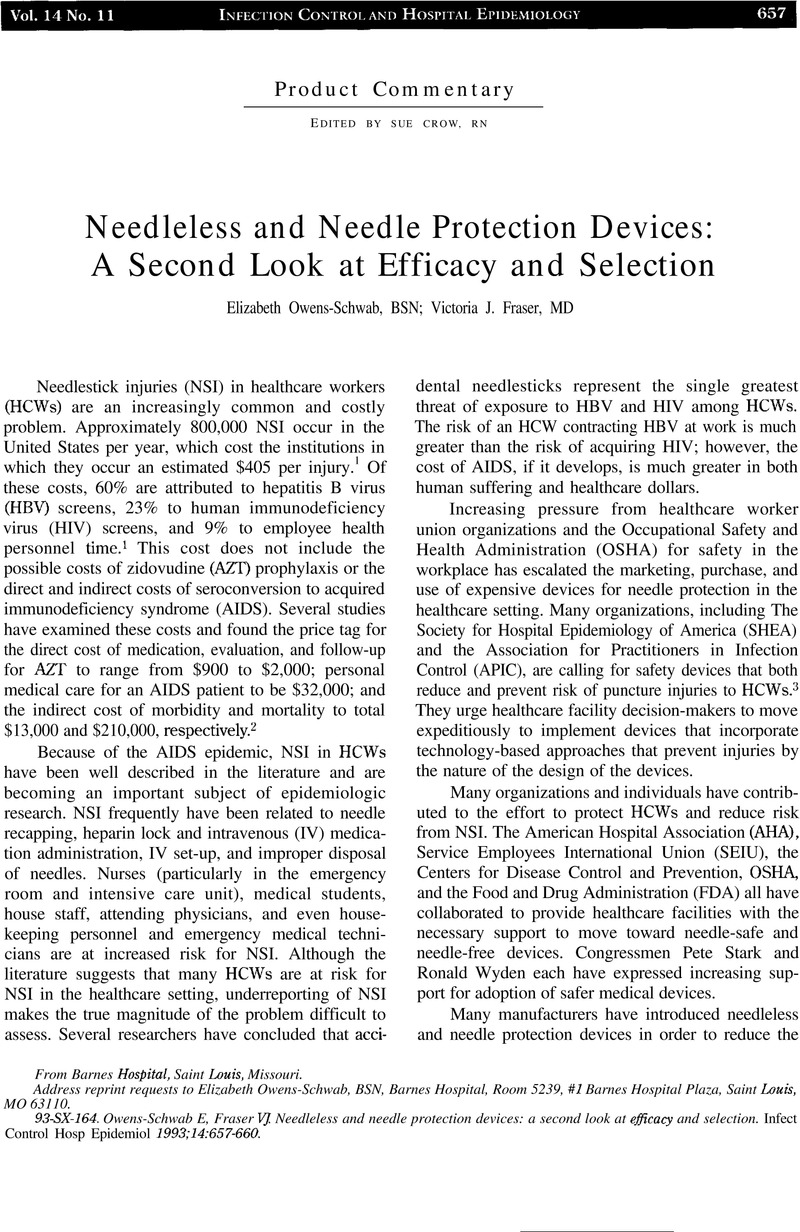Crossref Citations
This article has been cited by the following publications. This list is generated based on data provided by Crossref.
Finkelstein, Lori E.
Solomon, Robin T.
and
Mendelson, Meryl H.
1996.
Choosing Needlestick Prevention Devices.
American Journal of Nursing,
Vol. 96,
Issue. 10,
p.
18.
Cardo, Denise M.
and
Bell, David M.
1997.
BLOODBORNE PATHOGEN TRANSMISSION IN HEALTH CARE WORKERS.
Infectious Disease Clinics of North America,
Vol. 11,
Issue. 2,
p.
331.
Hanrahan, Anita
and
Reutter, Linda
1997.
A Critical review of the literature on sharps injuries: epidemiology, management of exposures and prevention.
Journal of Advanced Nursing,
Vol. 25,
Issue. 1,
p.
144.
Grimmond, T.
Rings, T.
Taylor, C.
Creech, R.
Kampen, R.
Kable, W.
Mead, P.
Mackie, P.
and
Pandur, R.
2003.
Sharps injury reduction using Sharpsmart™—a reusable sharps management system.
Journal of Hospital Infection,
Vol. 54,
Issue. 3,
p.
232.



